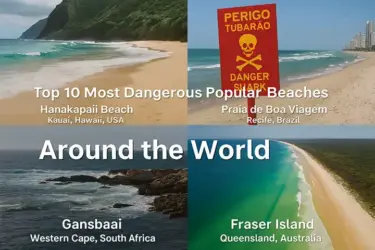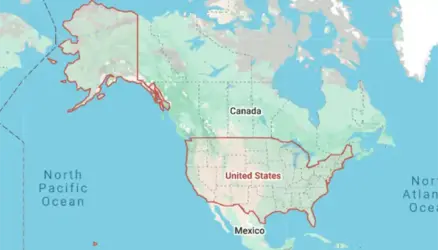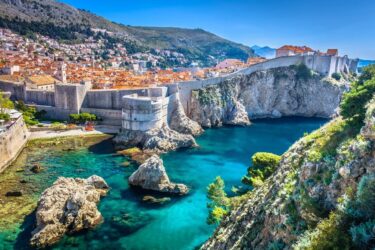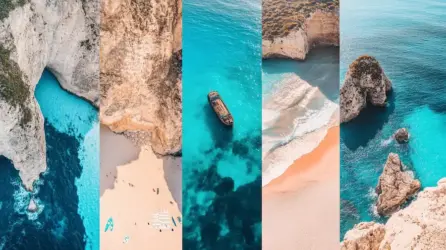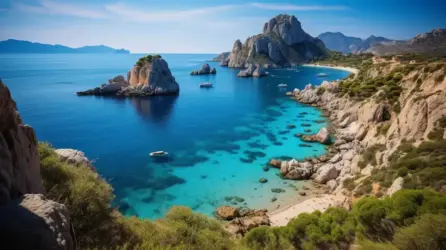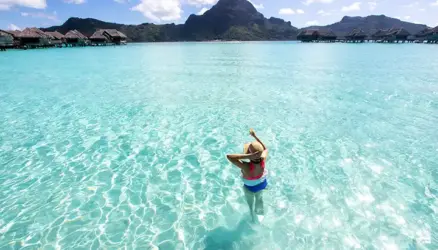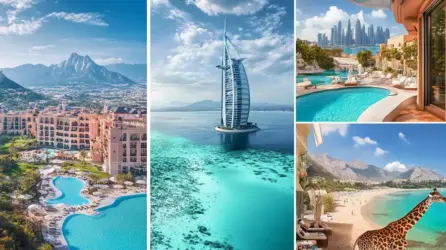10 Beaches That Fall Short of Paradise: The World’s Worst Beach Experiences
When people imagine beaches, they often picture pristine sands, turquoise waters, and swaying palm trees. However, not all beaches deliver on this idyllic promise. Some are plagued by pollution, overcrowding, dangerous conditions, or other issues that make them less than ideal for a relaxing day by the ocean. Here are ten of the world’s most disappointing beaches, where visiting may leave you yearning for a different shoreline.
1. Kamilo Beach – Hawaii, USA
Located on the Big Island of Hawaii, Kamilo Beach, unfortunately, lives up to its nickname as the “Plastic Beach.” Strong ocean currents deposit massive amounts of marine debris, primarily plastic waste, onto its shores. While volunteers regularly work to clean up the beach, it remains one of the most polluted in the world. The overwhelming sight of plastic litter makes Kamilo a beach best visited for environmental awareness rather than relaxation.
Why It’s on the List: High levels of plastic pollution and constant marine debris.
2. Guanabara Bay – Rio de Janeiro, Brazil
Guanabara Bay has iconic views of Sugarloaf Mountain and Christ the Redeemer, but its beaches suffer from severe pollution. Wastewater, industrial pollutants, and floating garbage plague the waters, making them unsafe for swimming. The beach was once beautiful, but today, it represents the environmental toll of urbanization.
Why It’s on the List: Pollution from sewage and industrial waste, making swimming hazardous.
3. Chowpatty Beach – Mumbai, India
Chowpatty Beach is one of Mumbai’s most famous beaches, but it’s far from an idyllic seaside escape. Known for its annual Hindu festival, Ganesh Chaturthi, where large crowds gather to immerse idols in the sea, the beach often suffers from littering and pollution. Poor waste management and heavy industrial presence add to its reputation as one of the world’s most polluted beaches.
Why It’s on the List: Overcrowding, pollution, and littering, especially after festivals.
4. Juhu Beach – Mumbai, India
Another beach in Mumbai, Juhu Beach is popular among locals and tourists alike. However, it’s often overcrowded, and litter can be found scattered across the sand. Water pollution from nearby drainage channels makes swimming unsafe, while the overwhelming number of visitors means the beach rarely gets a chance to recuperate.
Why It’s on the List: Overcrowding and water pollution, with safety concerns for swimmers.
5. Haina Beach – Dominican Republic
Haina Beach, also known as the “Dominican Chernobyl,” is notorious for its extreme levels of pollution due to lead contamination from nearby industrial activities. This contamination has not only affected the beach but also the health of nearby residents. The water and sand here are unsafe for both swimming and sunbathing, making it a place to avoid.
Why It’s on the List: High levels of toxic pollution from lead, posing serious health risks.
6. Kuta Beach – Bali, Indonesia
Kuta Beach is a famous tourist spot in Bali, but over-tourism has taken its toll. The beach often suffers from litter and pollution, especially during the rainy season when garbage washes ashore. While there are days when the beach is relatively clean, visitors frequently complain about plastic waste, crowded conditions, and excessive noise.
Why It’s on the List: Overcrowding, noise, and seasonal pollution issues.
7. Maho Beach – Sint Maarten
Maho Beach is unique due to its proximity to Princess Juliana International Airport, where planes fly extremely close overhead as they land. This has made it popular among thrill-seekers, but the beach’s appeal is also its downfall. The noise from the planes is deafening, and the powerful jet blasts can pose serious safety risks, even sending beachgoers tumbling across the sand.
Why It’s on the List: Noise pollution, safety risks from jet blasts, and overcrowding.
8. Doheny State Beach – California, USA
Located in Southern California, Doheny State Beach has been frequently cited as one of the state’s most polluted beaches. Waste from nearby storm drains often flows directly into the ocean, contaminating the water. While the beach itself is popular among locals, the poor water quality makes it unsuitable for swimming.
Why It’s on the List: High levels of bacterial contamination, making swimming unsafe.
9. Repulse Bay – Hong Kong
Repulse Bay is a popular urban beach in Hong Kong, but its beauty is often overshadowed by overcrowding and noise. High-rise buildings and luxury apartments surround the beach, creating a somewhat commercialized and artificial atmosphere. While it’s a convenient escape for city dwellers, the lack of tranquility and constant crowds detract from the beach experience.
Why It’s on the List: Overcrowding, noise, and an overly commercialized atmosphere.
10. Port Phillip Bay Beaches – Melbourne, Australia
Many of Melbourne’s beaches around Port Phillip Bay, such as St. Kilda Beach, suffer from issues related to water pollution, especially after rainfall. Stormwater run-off can lead to poor water quality, making it unsuitable for swimming. Despite efforts to keep the beaches clean, the pollution and murky water detract from their appeal.
Why It’s on the List: Water pollution, murky water, and safety concerns after rainfall.
While these beaches may not offer the idyllic seaside experience many travelers seek, they highlight important environmental issues such as pollution, overcrowding, and the consequences of rapid urbanization. Visiting these destinations can serve as a reminder of the impact human activity can have on natural landscapes and emphasize the importance of sustainable tourism. For those looking to make a positive difference, engaging in local clean-up efforts and supporting eco-friendly initiatives can help preserve these coastal areas for future generations.

